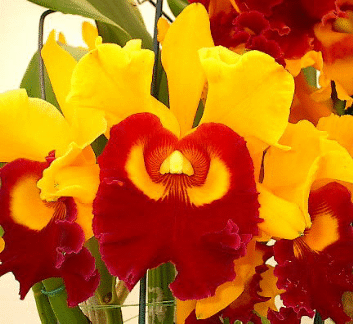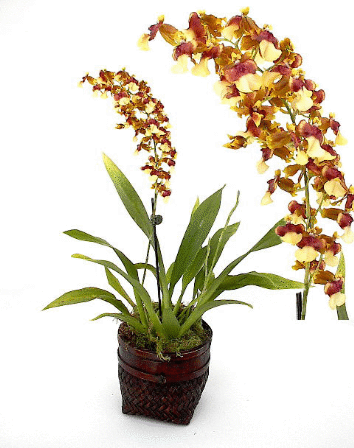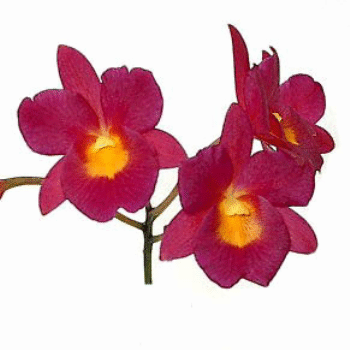<font face="arial" size="2"><b><center>Orchidaceae Newsletter January 2005
<center></b>
Volume 2 # 1
----------------------------------------------------
Our Sponsors
From Barnes and Noble:
 
Orchid Growing for Wimps: Techniques for the "Wish I Could Do That" Gardener
It's great to have another source of income?
Look at this.

-----------------------------------------------------
Content
1. Our Newsletter Name
2. Your January Specials
3. Winter Care for Your Orchid Plants
4. This Month Picture
--------------------------------------------
If this newsletter has been passed on to you from a friend, I hope that you enjoy it. If you
do, I'd appreciate it if you would subscribe
I promise that your email address will only be used to send the newsletter to you. We do
not sell or rent any addresses or information about you.
--------------------------------------------
Our New Name
Orchidaceae
Yes, I really like this name for our monthly newsletter.
As taken from the dictionary it means: "enormous cosmopolitan family of perennial terrestrial or epiphytic plants with fleshy tubers or rootstocks and unusual flowers." This certainly pertains to orchid plants.
I want to thank all those who have taken part in naming our "newsletter"
January Specials
Here are the January specials provided to all our subscribers before they actually become posted on the website.
This month's specials are especially diverse, from cattleyas, (the Blc), to the Phalaenopsis Taipei to the Milotnidium.
These make very special gifts and are priced to sell.
If you want to purchase one of these before January here is our contact information
Remember, orchids-plus-more.com will ship your orchid plants Free with 2nd day Fedex and our guarantee is your full satisfaction.
 Chunyeah "Yiesen #1"
Chunyeah "Yiesen #1"
Regularly Priced $59.95
On Sale in Jan for $44.95
This award winning orchid produces stunning, large yellow blooms with a red lip. This is Blc. Chunyeah "Yiesen #1" not #2. This plant (#1) produces some of the largest blooms of most of the cattleyas we grow. Fragrant. Rare..
 Mtdm. Pupukea Sunset "H&R"
Mtdm. Pupukea Sunset "H&R"
Regularly Priced @ $59.95
On Sale in Jan for $44.95
the fragrance and the interesting growth pattern of this orchid makes it a must have orchid for any collection. Unlike other orchids that emit a mild scent, Mtdm. Pupukea Sunset "H&R" has a strong fragrance that smells like a mix between wild sage and vanilla. Comes with basket shown. Stands twelve inches Rare. Highly recommended.
 Phal. Taipei Gold Nugget "M"
Phal. Taipei Gold Nugget "M"
Regularly Priced at $65.95
On sale For $53.95
Thick blooms that produce a faint, sweet honey scent on a spike extending from dark green, robust foliage. The yellow of this orchid is more "gold" than a similar orchid like Phal. Brother Lawrence. This "richer" gold adds to the blooms almost glowing appearance. Comes with basket shown.
Your Orchid Tip of the Month
Winter Care of Orchid plants
Depending on where you are located this article may relate to you. The winter care of orchid plants is aimed primarily for growers in the Northern and Middle U.S. Most Southern areas do not need to take special precautions for winter care of orchid except when a frost alert is in place. For the enthusiast, hobbyist or orchid lovers who grow their orchid plants outside during the warmer months this article is for you.
We are primarily going to talk about the lighting, watering and temperature changes that will affect the growing orchids.
During the winter season we adults feel the effects of less light and cooler temps giving rise to feeling lethargic or lazy. Orchid plants will also be effected.
Orchids need a certain amount of light and temperature to grow normally and the winter season can change that. A significant number of plants will have this as a normal period of dormancy or rest needed to get ready for the next budding period.
Light
What about the natural light for the winter care of orchid plants? The days are shorter and the nights longer so plants that need moderate to high light intensity may get short changed. This means that orchid plants like cattleya, epidendrum, dendrobium and oncidium may possibly need some artificial light.
The high intensity orchids need about 12 to 14 hours of light during their growing season and less than that puts them at a disadvantage for generating buds and blooms.
It is only in the extreme northern US lattitudes that we don't find at least 14 hours of daylight. The intensity of the light may be diminished because the sun is lower in the atmosphere during the winter.
So if your plant needs more light you may need to move them from an area of where they used to get bright diffused light to a sunnier area of the home. The use of grow lights is not out of the question either especially for those plants requiring high light intensity like oncidums and some phals.
Lighting is an important aspect of winter care of orchid plants and if the plants do not get enough they will not bud.
Watering
Let's change our attention to watering. The winter care of orchid plants usually means less watering because there is a needed period of rest. Instead of watering twice a week try watering once a week or instead of watering once a week we need to do it every 10 to 14 days.
Now this changes if your home has low humidity, in this case you will need to water more often. The normal humidity that orchid plants love is between 40 - 60%. Most homes have about 40 -50 % humidity. If your home does not you may need to use humidity trays. These are metal or plastic trays that are filled with pebbles and then about 1/2 with water.
Temperature
The winter care of orchid plants cannot be complete without mention of the required temperature. Since most orchids need temps between 55 - 80 degrees F, the plants in the middle and northern US need to come indoors. There are certain things we need to bear in mind. Normal home temps are usually good for orchid plants but we need to consider that if we keep our home temps low due to the high heating bills we may need to add some warmth during the day to the plants. It is not good to keep them at a constant 60 -65 degrees, they do need times with temps higher.
Be careful of the setting as well, a window sill in the day time may be wonderful for the plants but at night it may get too cool. In order to protect the plants use a curtain as a barrier to the cold. On the other hand the window sill can also burn plants if it gets too hot. By the way this damage also occurs with lack of water and over heating of the orchid plant.
The most common signs of cold injury include injury to the plant leafs which can be seen as pitting marks, large sunken areas or the eventual discoloration which can lead to a brown leaf. The amount of damage varies considerably with the cold injury. If a plant is frozen you will notice this rather fast after thawing. The dead spots on the leaves as well as the flowers and buds is easily noticeable.
Fertilizing
Just a quick word about fertilizing, as this period is usually one of resting the need for fertilizer diminishes as well. You should stretch out the fertilizing to be twice as long as you would during the summer. For example if your routine for fertilizing was once a week in the summer than the winter care of orchid plants says that it now should be once every two to three weeks.
I hope that you have found "the winter care of orchid plants" helpful. If so please net me know. If there are any other suggestions for topics please let me know by sending your
Picture of the Month

"Here's a picture of a Calypso Orchid or Fairy Slipper, Calypso bulbosa, taken this spring among the lodgepole pines in the Wild Basin Section of Rocky Mountain National Park. It is one of the earliest plants to bloom. The Calypso Cascades [ a waterfall in Rocky Mountain National Park] were named for this flower."
This picture was taken with a Toshiba digital camera with a close up lens
The picture was sent in by Mr M. Batt of Colorado.
Do you have a special orchid picture you would like to submit for our orchid of the month? If so please send it to us.
|




